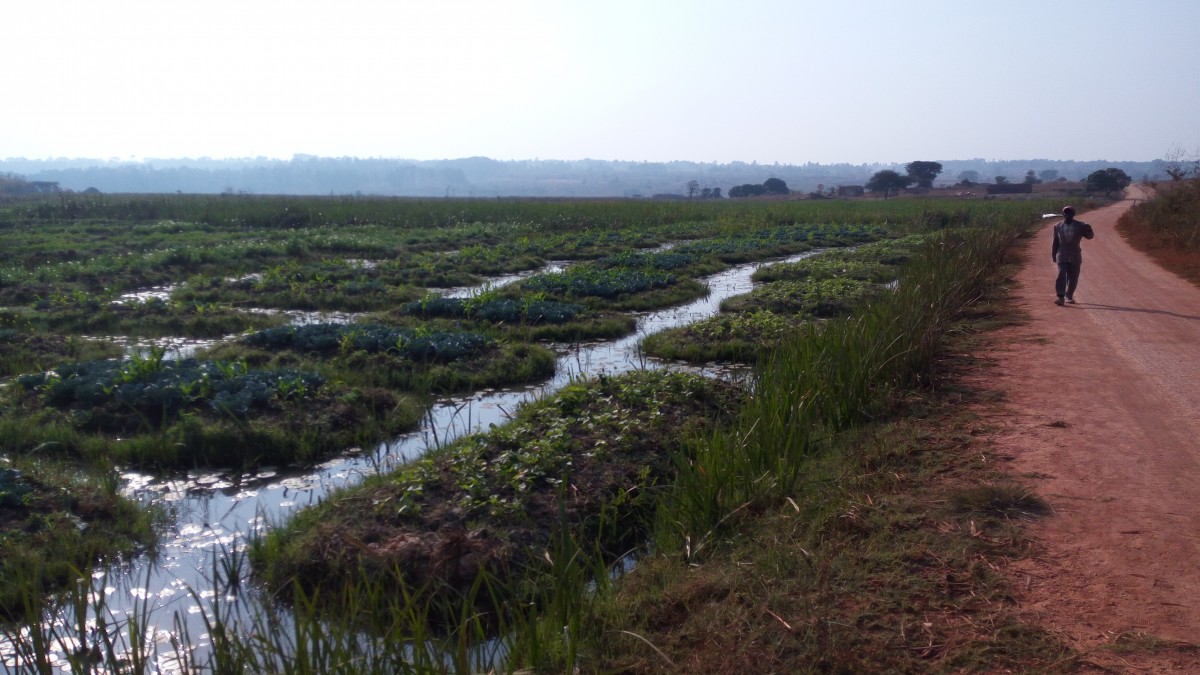Little Ruaha River (LRR) watershed in Tanzania is facing formidable water resources management challenges. Like in many other areas in the country, the water resources here are under pressure from increasing climate change, over-abstraction of groundwater and land use changes.
Increasing competition and conflicts over water can have adverse impacts on both people’s livelihoods and the environment. Therefore, as water scarcity increases, the need for proper water allocation plans and management in resolving conflicts over access to water also grows.
Responding to a demand from local decision makers, a WLE research project has developed a water allocation model that can shed light on current and future water availability in the watershed, helping decision makers to better balance supply and demand.

One river, many uses
In LRR watershed, many different stakeholders rely on water for different purposes, making it particularly challenging to manage and share water resources.
For example, the watershed is an important source of domestic water supply for nearby towns, including Iringa Municipality and other areas of Iringa, Kilolo and Mufindi districts, with a combined population of almost 100,000.
The river is also an important waterway for the development of the Ihemi cluster, part of the Southern Agricultural Growth Corridor of Tanzania (SAGCOT) in which significant irrigation investments are planned to further intensification of agricultural production.
Furthermore, the river’s water is vital for the ecology of the nearby Ruaha National Park, and it supplies about 18 percent of flows going into the Mtera Dam, which is an important source of hydroelectric power in Tanzania.
“We know from experience that excessive use of water resources, without proper planning, can have very grave consequences,” says Felix Kamau, who led the WLE research project and who is the Africa Agriculture Strategy Director at The Nature Conservancy. He continues: “In Ethiopia, for example, the design of Koga irrigation project had a huge cost on the environment and downstream communities because the natural variability of river water flow and the livelihoods of local communities were not considered.”
Already, water related conflicts have been reported in Little Ruaha River Watershed, mainly between competing sectors, such as agriculture versus livestock keepers, downstream and upstream users. As population and related human activities are expected to continue to grow, so are the extent of water-related conflicts.
Demand for a water allocation tool
Water resources management in the LRR watershed falls under the jurisdiction of the Rufiji Basin Water Board (RBWB). During a series of meetings, WLE researchers learned of the diverse challenges faced by the RBWB.
This office carries huge responsibilities, including monitoring water quantity and quality, including for environmental needs; issuing water use permits for water abstractions; tracking and addressing illegal water abstractions; mediating and resolving water conflicts within the basin, among others.
“We are facing difficult challenges in allocating water among multiple water uses, says Mr Idris Msuya, the basin water officer of RBWB. “We have always wanted a tool that could help us in decision making, and it has been good to see a WLE research project developing a model that that can be used for this purpose.”
Kamau says about the water allocation model:
“We knew that one of the challenges this office faces is a lack of information about how much water is actually available, so that’s where we started. But the model also projects what water is currently being used for and what are likely future demands.”
The water allocation tool is based on the WEAP model. It allows the prediction and evaluation of possible futures, such as the potential impacts of for example water conservation programs, demand projections, hydrologic changes, and changes in allocations or operations priority and new infrastructure.
Simulation of natural hydrological processes allows users of the model to assess the availability of water within the watershed. Then, allocation of water based on consumptive and non-consumptive use as influenced by human activities enable evaluation of the impact of human water use.
Future users and uses
The water allocation model was presented at a sustainable development planning workshop in October 2016, giving the RBWB officials and other key Ihemi cluster stakeholders the opportunity to give feedback. The RBWB appreciated the effort and consider it a potential tool in water resources management.
Once the model is finalized, it will be made available to the SAGCOT Centre, where decision makers in the RBWO and SAGCOT will have easy access to it. To support uptake of the model, and other tools and findings, WLE project partners The Nature Conservancy and the World Wildlife Fund plan to hire a technical support person to work at the SAGCOT Centre during the next year.


